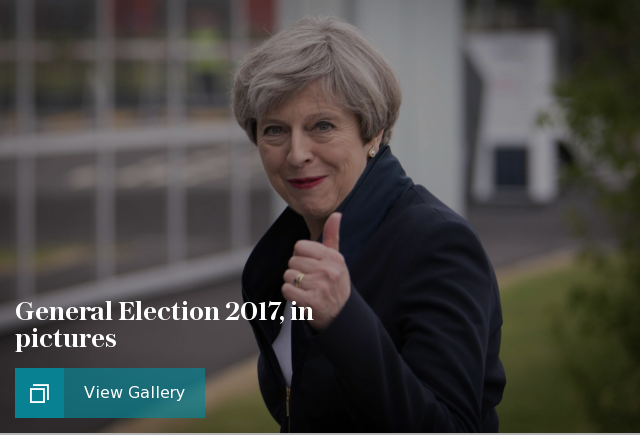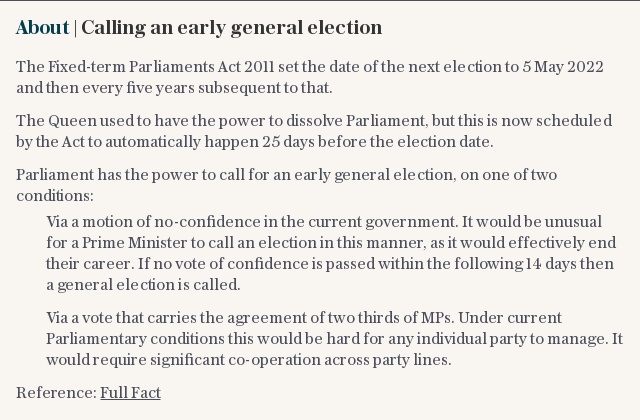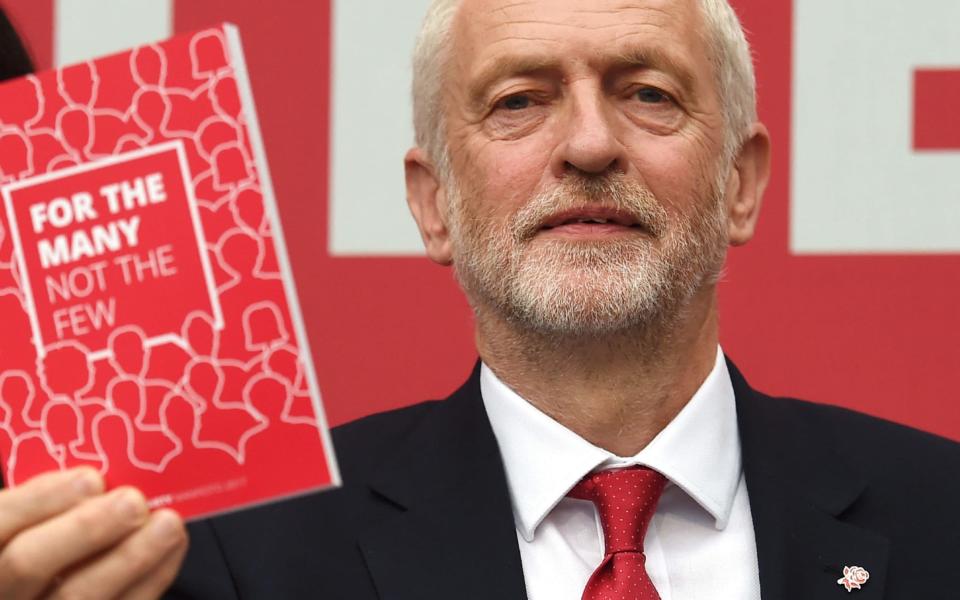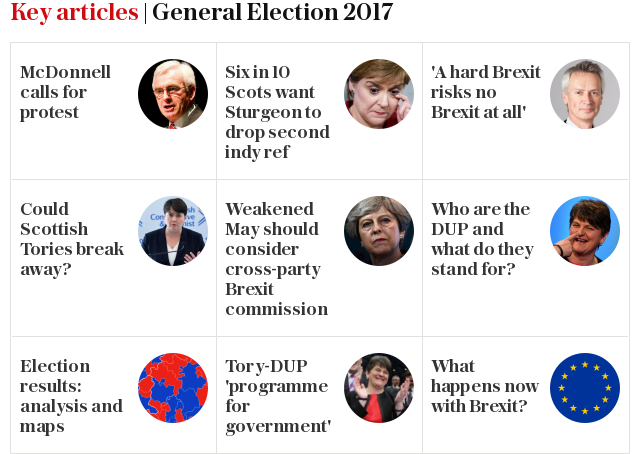When is the General Election and who will win?

When is the General Election?
The General Election will take place on Thursday, June 8 when Britain goes to the polls to elect who they want to run the country.
Polling stations are open from 7am to 10pm on polling day and you will usually find them in public buildings like local halls or schools.

What is being decided?
Elections will be held in all 650 constituencies across the UK.
A government will then be formed by whichever party gets the majority of MPs, or a coalition of parties if there is no overall majority achieved.

Why has Theresa May called an election?
Prime Minister and Conservative leader Theresa May called a snap general election claiming that divisions at Westminster risked hampering the Brexit negotiations.
She said she wanted "unity" at Westminster as complex talks on Brexit begin in earnest to untangle the UK's relationship with the European Union.
Speaking on the steps of Downing Street, Mrs May said that Britain wanted certainty, stability and strong leadership following the referendum, adding: “The country is coming together but Westminster is not.”
Why call an election now?
Senior Tories had urged Mrs May to call an early election, taking advantage of the Conservatives' healthy opinion poll lead over Jeremy Corbyn's Labour.
Mrs May suggested she reached her decision over the Easter parliamentary recess - during which she went on a walking holiday in North Wales.
She is banking on a huge lead in the polls and is also taking advantage of the fact that EU leaders will not be ready to start formal negotiations about Brexit until the autumn.
How does a snap election work?
In order for the snap election to take place at least two-thirds of MPs had to agree to a motion in the House of Commons.
MPs approved the motion for an early general election by 522 to 13 meaning the support of two-thirds of all MPs required for this motion to pass was reached.
If Mrs May hadn't called a snap general election, the next election was scheduled for May 7, 2020, with Parliament being dissolved on 30 March 2020.

Who will win?
Mrs May is riding high in the polls, although her lead has dropped from 17.8 points to 12.7 since she called the election on April 18.
Some polls have had the Tories at almost double the vote share of Jeremy Corbyn's Labour Party, indicating that the most likely outcome of the election would be a landslide victory which would increase her party’s current working majority of 17 in the House of Commons.
Indeed, some experts estimate that the Tories could take as many as 56 seats from Labour, leaving them with a 200-seat lead over the official opposition party.
Coral new customer offer: Tories 20/1 to secure most seats
Which Brexit seats could the Conservatives gain?
There are 58 Labour-held seats where the Conservatives are fewer than 9,000 votes behind and where the constituents voted Leave in the EU referendum last June. Of these 58 seats, 37 are located in the Midlands or in the North of England, while a further seven are in Wales.
The seat with the narrowest Labour majority is Halifax, where the Conservatives finished just 428 votes behind Labour in the 2015 General Election. This seat is particularly vulnerable due to the fact that Halifax voted to Leave the EU by 60 per cent to 40 per cent.

Which Remain seats could the Tories lose?
The Tories face pressure from enthusiastic EU-backing Lib Dems are seeking to re-gain seats that they lost in the 2015 General Election.
Mrs May currently holds Remain-voting Lewes with a majority of 1,083 (2.1 per cent) and Twickenham with a majority of 2,017 (3.3 per cent). Both were taken from the Lib Dems by David Cameron in 2015.
However, seeing as both of these constituencies voted Remain in 2016 – Twickenham with a majority as large as 66 per cent – the Lib Dems are likely to see this election as a chance to win over those who deserted them in the last election.
Kingston & Surbiton and Bath also voted Remain and have a Tory majority of less than 5,000, meaning they are potential targets too.
What does the Conservative manifesto say?
What does the Labour manifesto say?
Do I have to vote?
No, not in the UK.
But there are a number of countries around the world where you can be fined for not casting a vote.
In Australia you can receive a financial penalty for failing to have you name marked off the electoral roll. You do not have to choose a candidate or a party, but the ballot paper must be "marked".
Who is my local MP?
Click here on our handy tool find out who is standing in your constituency.
Why are elections held on Thursdays?
The last time a British election was not held on a Thursday was in 1931 when polling was on a Tuesday – in the midst of the Great Depression.
Thursday is the traditional market day in the UK - when most people are bustling around in their local town.
How much will the election cost?
The total spend on the 2017 general election is likely to be millions of pounds lower than in 2015.
The short-term nature of the election has significantly reduced the amount of time and money that can be spent on campaigning, and is expected to lead to a decrease in party spending of nearly £15m.
Election spend can be broadly broken down into three categories: administrative costs, opportunity costs as the election period detracts from day-to-day life, and campaigning costs spent by political candidates.
In 2015 the Conservatives were the biggest spending party on a national level, with a sum of £15.6m - around £3m more than Labour. However, this was actually smaller than in 2010, when the Conservatives spent £16.8m.
In total, £39m was spent by a total of 57 parties and 23 non-party campaigners in the run-up to the 2015 election.
What happened in the 2015 election?
After 2015's General Election, David Cameron's Conservative Party emerged victorious - winning 331 seats, which is enough to form a majority government.
A ruthless strategy of targeting Lib Dem seats meant that the Tories made a net gain of 24 seats - leaving Nick Clegg with just eight.
Labour were the second largest party, although their loss of seats led to the resignation of Ed Miliband. Despite their vote share increasing marginally, the loss of almost all of their Scottish constituencies to the SNP meant that the party had a net loss of 26 seats.


Our manifesto: Real political insight, free for 30 days.
Rely on unrivalled insight and sharp analysis from our stellar team of Westminster insiders.
Join the most trusted voice in politics. Follow Election 2017 with Telegraph Premium.

 Yahoo News
Yahoo News 
